SUMMARY
This is AI generated summarization, which may have errors. For context, always refer to the full article.
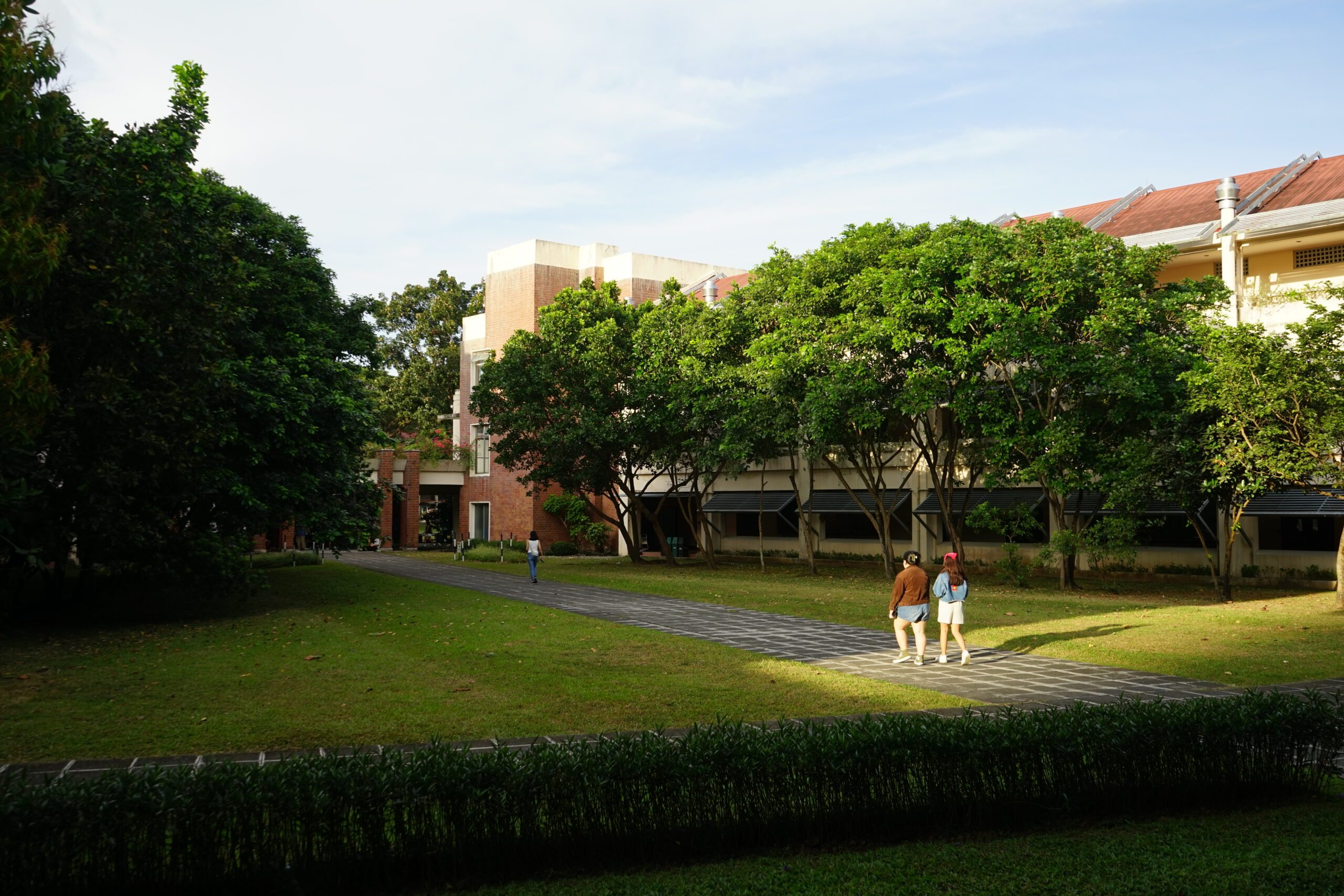
MANILA, Philippines – Fifty years ago, the first batch of women in Ateneo de Manila University (ADMU) were wary of wearing skirts in the library, as the male students watched from a table below as they went up the stairs.
“What were your observations regarding the girls of Ateneo?” a campus journalist asked a then-economics senior Jun Simon in the August 1973 issue of the official student publication, The GUIDON. It was around three months into the first co-educational year of the college.
“Oh, I observed a lot! There were red ones, blue ones, and many white ones… and there was one without one!” Simon had said, noting that he had to “adjust” his favorite section of the library from the Filipiniana section to the reference section.
Margie Logarta, one of the first women to enter Ateneo in 1973, recalled such peeping toms.
“On certain days of the week, if you had a class on the second or third floor, you would be wise to wear jeans or risk the usual attempts by peeping toms. I remember this popular table in the Rizal Library where the regular users would be male. Why? Because of the ladies going up to the second floor who were wearing skirts that day,” Logarta told Rappler in a recent interview.
Five decades after Ateneo decided to welcome women into its colleges, the school announced on February 10 the full implementation of a co-education scheme to welcome girls in all levels of its basic education, starting from kindergarten.
Ateneo began accepting girls for senior high school in 2016. Co-ed admissions for kindergarten will begin by school year 2024-2025, with a complete co-ed roll-out by school year 2029-2030.
Like other boys’ exclusive schools, Ateneo faces the challenge of ensuring that girls will be welcomed sensitively and inclusively, given more than 100 years of an all-boys culture in its basic education.
ADMU, a Catholic school, was founded as a school exclusively for boys in 1859 during the Spanish colonial era, a time when education was seen as unsuitable for women.
The first women
Ateneo’s first months of co-education in 1973 were an adjustment period for men and women alike. After a March 1972 plebiscite that saw 80% of Ateneans in favor of co-education, 162 young women composed of freshmen and transferees entered Ateneo for the first time in June.
In the same August 1973 GUIDON article where the economics senior poked fun at seeing “red, white, and blue ones,” the young ladies and men acknowledged the discomfort of the first months.
While conceding that the atmosphere was “relaxed,” then-economics freshman Patty del Rosario said, “I think on the whole, girls are accepted, [but] I still feel a little uneasy. I notice that guys look down on girls. For example, if you get a low mark, they ask how you got accepted in the first place.”
Meanwhile, then-psychology sophomore Juan Kanapi Jr. said that registration and freshman orientation was like “one big fashion show. Both the girls and the guys were plastic and faking. The atmosphere was tense.”
As someone who experienced all-girls education from Grade 2 to senior year of high school, Margie Logarta, looking back, thought the idea of mingling with the opposite sex on a daily basis was a “thrilling concept.” While she had three older brothers who attended Ateneo, she was raised as “virtually an only child” by her grandparents and aunt.
Logarta decided to apply to Ateneo after learning it was going co-ed, recalling that the main requirement was just an essay that explained why one wanted to study in the university.
Going into Ateneo as a communication freshman, Logarta found that the boys were “not progressive.”
“Some of the ‘pretty’ ones were told their names were scrawled across the toilet walls, or worse, on the water closets themselves. That, of course, made them weep,” she said.
Logarta said that things settled down after a few months, expressing sentiments similar to those of the other girls in the GUIDON article. “The administration made good its promise – not to post marks in public – and students started forming friendly gangs, study groups… and even falling in love.”
Tradition vs inclusivity
According to vice president for basic education Father Joaquin Jose “Jonji” Sumpaico III, who led the project team that conducted the six-month study and consultations for the full co-ed shift, Ateneo going co-ed was a long way coming.
Sumpaico said that the only Jesuit schools left in the country that were still all-boys were Xavier School and the grade school and junior high school of ADMU. The decision to go fully co-ed was in response to its Lux-in-Domino strategic plan, which aimed for increased access to, and impact of, Ateneo’s education, specifically “to increase student diversity by granting female student access to the Ateneo de Manila basic education schools.”
Sumpaico said in an interview with Rappler that over 50% of stakeholders in the school, which included faculty, staff, and students, agreed that Ateneo was ready for a full co-educational system. But some opposition still came from some older-generation “True Blue” Ateneans – a term used to describe students who enrolled in Ateneo for all educational levels.
“We would always have people who would probably not agree to it, given that there is a 160-year tradition that [it] has been [a] boys’ school… There was some pushback from some segments,” said Sumpaico.
Helen Amante, a member of the project team and lecturer at the university’s school of management, said there was also feedback along the lines of, “If it isn’t broken, why fix it?”
“There were really sectors [that] would really say that then there will be more traffic, then there will be more facilities that have to be structured. [They were asking,] ‘Why? Why do we need to go through this?’” she said.
Other concerns raised by respondents included preparations like physical facilities – restrooms for other genders – as well as having to go through educational materials again “which have been highly masculine,” according to Amante.
But apart from the desire to preserve tradition, having to prepare physical facilities, and reviewing educational materials again, the respondents were “overall very supportive” of co-education, said Mary Sieras, assistant to Sumpaico.
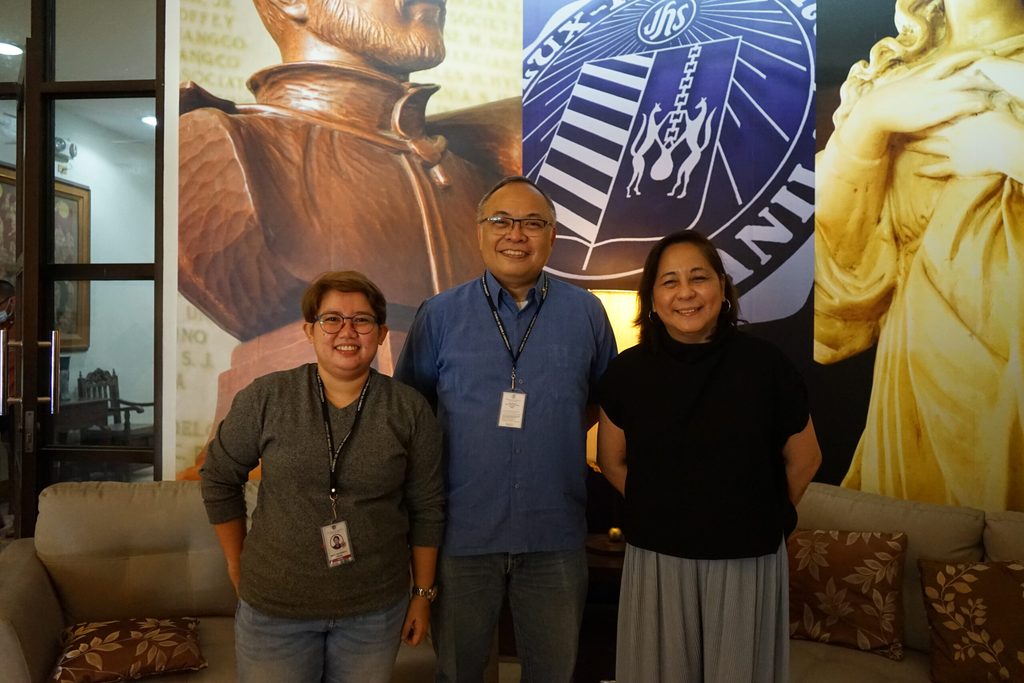
Joel Sison, who graduated from Ateneo High School in 1985, and college in 1989, was highly supportive of his alma mater going fully co-ed.
“Yes, people should live with everyone, regardless of race, age, ability, socio-economic status, and in this case, gender… [The] best way to learn this is during formative years. Senior high and college medyo late na (is a little late). This can tackle and hopefully solve gender sensitivity issues. Segregating, like exclusivity, promotes indifference, misunderstanding, and even false facts. [The] bigger problem is how to do it, but it’s something we must address by going fully co-ed,” he said.
Marvin Duran, a True Blue Atenean from grade school to university, said that it was only “logical” to go co-ed since boys and girls are not segregated outside of school. “There will be less adjustments when going to college. [It] will be easier to deal with people in general,” he said.
“But a sentimental part of me enjoys the tradition. And there is a fraternity in exclusive schools. [In other words,] brotherhood, which is nice. But overall, not a good enough reason to avoid co-ed,” said Duran, a communications technology management graduate of 2016.
Addressing machismo and misconduct
Jb Bejarin, an Atenean from Grade 2 who recently graduated valedictorian with a degree in political science, described the culture of Ateneo grade school and junior high as “very masculine.”
Bejarin recalled that some boys tore pages from science books – particularly the pages on the reproductive system, to laugh at them. There were “green jokes” and homophobic remarks thrown around, and he was constantly asked if he was gay, with a tone he perceived to be insulting. His earliest memory of a “green joke,” or a joke with a sexual, vulgar connotation, was in Grade 4.
Bejarin recalled being taught by Ateneo to be kind to all, and to be “men for others.” However, he said, the specific emphasis on how to treat women was not so much highlighted. He said some students and even faculty members did not fully understand women’s empowerment, as “gender equality” to some meant treating men and women the same way.
Bejarin said he understood gender equality as giving more attention to the needs of women to be empowered, since they are “traditionally disadvantaged and mistreated.”
“Their understanding of gender equality is ‘we are all equals.’ But the reality is not that way, that’s why we need to lift up women and call out some aspects of masculine culture. So going back, Ateneo always taught us to be persons for others, but then with regards to bringing up gender issues, it hasn’t really surfaced,” Bejarin said in a mix of English and Filipino.
Bejarin eventually became part of the first co-ed batch of Ateneo Senior High School (SHS) students in 2016. As part of the student council, Bejarin heard from female friends and batchmates about issues involving their integration. The students formed Lakambini, a committee that aimed to push for gender sensitivity and awareness.
“[Lakambini] really emerged because of not only discrimination against women, but also cases of sexual misconduct against women,” he said.
While there was a policy against sexual misconduct from both teachers and peers, Bejarin recalled that there were issues in the handling of cases. “I remember [some who had] a sexual harassment complaint, and the different offices passed their cases among each other.”
All Philippine schools have been mandated to have a Committee on Decorum and Investigation (CODI) since the anti-sexual harassment law was passed in 1995. Bejarin said that while a CODI existed, its mechanisms were not as easily visible nor accessible. (READ: ‘Our school is not safe’: Ateneo students demand punishment for sexual predators)
“[My girl batchmates] told me, ‘When we entered Ateneo, we thought of Ateneo boys so highly.’ But when they got to school, they said that their whole perspective changed because of many reasons, one of them being, how some of us who grew up here treated them… And it’s saddening that other people didn’t feel included,” he said.
Sumpaico, however, wanted to point out that looking at Ateneo as an all boys’ club with locker room culture would be an unfair generalization, as there are “people who rose up… and became champions of inclusivity as well.”
Meanwhile, Amante said that in training boys to view and treat girls as equals, reviewing, revising, and adapting formation curricula was crucial.
Sieras added, “We have gender hubs from the [university], and now it’s being adapted and cascaded to the basic education. For senior high school, they already have all-gender toilets, so that’s one of the things to be considered when it comes to this transition. In terms of policies, we have CODI and in terms of support, we have our formation team.”
Fostering a gender-sensitive school
According to Melanie Reyes, executive director of the Miriam College Women and Gender Institute, transitioning from an all-boys school into co-ed is a “significant change that requires a thoughtful and intentional approach to diminish cultures of machismo and patriarchy.” Teaching boys to see girls as equal should start early in their development stage, ideally in their early childhood, Reyes told Rappler in an email.
Reyes spoke in a generic context for any all-boys school shifting to co-ed, and not necessarily for Ateneo alone.
According to Reyes, teaching gender equality by parents and caregivers sharing household responsibilities can begin at home, using gender-fair language, and challenging stereotypes and gender roles. Meanwhile, schools have a “big responsibility” in encouraging empathy, respect, consent, and bodily autonomy, which involves setting and respecting boundaries.
“Ensuring the safety of young girls entering a formerly all-boys school is very critical. It requires a comprehensive and multi-faceted approach. There should be a clear code of conduct that prohibits harassment and any forms of disrespectful or inappropriate behavior.
Reyes said that these policies, as well as the consequences for violating them, should be clearly communicated to all students, staff, and parents. “Schools should provide comprehensive training for staff and students on how to recognize and respond to incidents of harassment and how to support victims/survivors of harassment.”
There must also be available support mechanisms for victims of harassment, including counseling and legal resources.
“Schools should foster a safe and respectful learning environment regardless of gender which includes implementing policies that prohibit sexist language, bullying, and harassment. The culture of respect and inclusivity should always be present where everyone treats each other with kindness and compassion and having positive interactions among students of diverse genders,” said Reyes.
In Ateneo’s university, transgender students are free to express themselves. Can the same be expected as the lower grade levels become more gender-diverse? Sumpaico said yes, but that the school administration must still consider that younger students are still in the process of discovering themselves, which includes their gender identities.
“People are trying to understand at an early age what they are. So the best word to work with might be to support as they grow, but at the same time also, we try to make sure that we are not imposing things on people, and they are still free to discover their very selves, not just the physical self, but most important is the thing that we find in our beings in our souls, which is consistent to the Ignatian mission centuries ago,” he said.
Positive outlook
Despite being one of the first women to enter Ateneo, Logarta never felt that the men “ruled” the school. When she graduated in 1977, she had numerous feats to “go down the hill” with – she was program awardee of the communication department and president of the Communication Arts Society of the Ateneo.
“I feel that our pioneering batch did extremely well in showing the ultimate benefits of creating, not just ‘men for others,’ but more importantly, ‘men AND women for others,’” she said.
“Then and now, it will always be a ‘learning experience.’ We are, after all, imperfect human beings who must fail and strive in order to grow and find our true selves. I look forward to seeing the Ateneo co-ed experience continue to define itself in years to come,” she added.
Sumpaico also said that Ateneo will continue to adapt to new contexts and movements, while also keeping in its Catholic-school vision an “angle of faith.”
“At the end of the day, it’s God’s work, so we are but workers in the vineyard, and this is what we offer,” he said. – Rappler.com
Add a comment
How does this make you feel?
![[PODCAST] Making Space: Are boys’ schools ready to embrace co-education?](https://www.rappler.com/tachyon/r3-assets/612F469A6EA84F6BAE882D2B94A4B421/img/56A42F6413EA45BAB67116AE56D8C57B/making-space_640-4.jpg?fit=449%2C360)
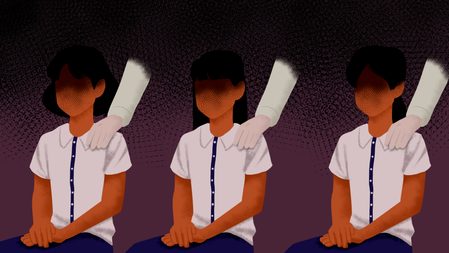

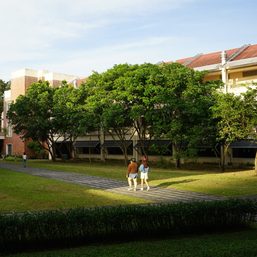

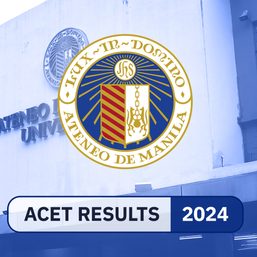


![[OPINYON] Tungkol sa naging viral na social media conjecture](https://www.rappler.com/tachyon/2024/07/thought-leaders-conjecture-07262024.jpg?resize=257%2C257&crop_strategy=attention)

![[EDITORIAL] Apat na taon na lang Ginoong Marcos, ‘di na puwede ang papetiks-petiks](https://www.rappler.com/tachyon/2024/07/animated-bongbong-marcos-2024-sona-day-carousel.jpg?resize=257%2C257&crop=280px%2C0px%2C720px%2C720px)






![[OPINION] Unpaid care work by women is a public concern](https://www.rappler.com/tachyon/2024/07/20240725-unpaid-care-work-public-concern.jpg?resize=257%2C257&crop_strategy=attention)
![[DECODED] The Philippines and Brazil have a lot in common. Online toxicity is one.](https://www.rappler.com/tachyon/2024/07/misogyny-tech-carousel-revised-decoded-july-2024.jpg?resize=257%2C257&crop_strategy=attention)

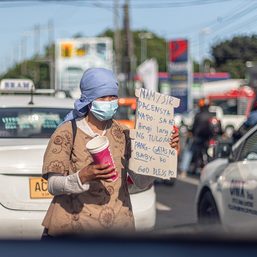
![[OPINION] Why women seek divorce](https://www.rappler.com/tachyon/2024/06/TL-women-seeking-divorce-june-14-2024.jpg?resize=257%2C257&crop_strategy=attention)
There are no comments yet. Add your comment to start the conversation.